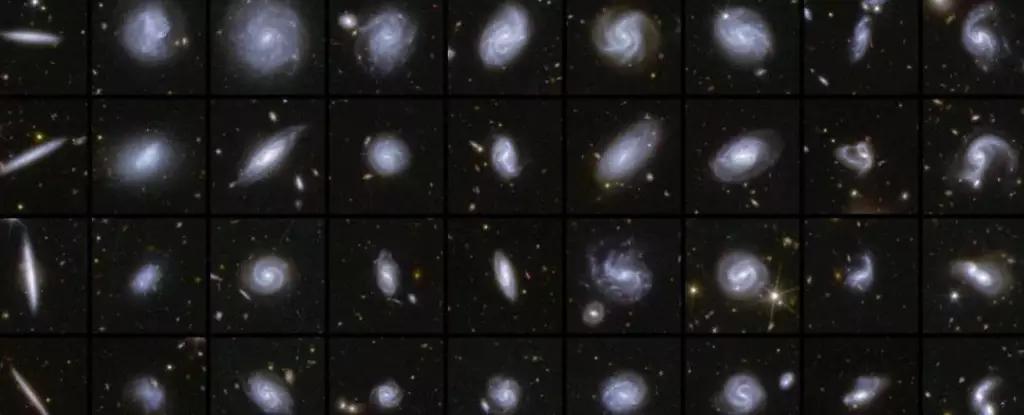The Euclid Space Telescope, launched by the European Space Agency (ESA) in July 2023, has quickly captured the attention of the astronomical community. Its remarkable ability to photograph intricate astronomical structures, showcased through its first stunning images, speaks to its potential to reshape our comprehension of cosmic dynamics. From the Perseus Cluster to the mesmerizing Horsehead Nebula, Euclid’s early outputs serve as a hint of the vast data landscape awaiting us on this adventurous journey through the cosmos.
What’s particularly striking about the telescope is its sophisticated imaging capabilities—underpinned by a robust 600 MB camera that is designed not only to capture finely detailed images but also to stitch those images together into expansive maps of the universe. This will facilitate an unprecedented exploration of billions of galaxies, stretching 10 billion light-years from Earth and covering over one-third of the night sky. With such ambitious parameters, Euclid presents itself as a formidable player in modern astronomy, aiming to unravel the complexities of our universe by tracking its expansion history.
Deep Fields and the Cosmic Puzzle
One of the cornerstone missions of the Euclid telescope is to conduct a series of deep field observations—regions of space that will be photographed repeatedly over time. These investigations are expected to yield valuable insights, much like the infamous Hubble Space Telescope did during its groundbreaking surveys. By studying the light from billions of galaxies, scientists will be set to discover how dark matter is distributed across the universe, thus illuminating one of the most enigmatic components of modern astrophysical theory.
The recent data release from Euclid—a critical milestone—has unveiled the first glimpses of these deep fields, revealing a treasure trove of information. Among the early discoveries are gravitational lenses and uniquely structured galaxies. The mission comprises two advanced instruments: a visible light camera (VIS) and a near-infrared light camera (NISP). Together, they offer the capability to determine the distances and masses of galaxies, which are essential for mapping the intricate cosmic web. This complex network consists of filaments comprising dark and normal matter, serving as conduits where galaxies and galaxy clusters are located.
An Unprecedented Data Deluge
The figures emerging from the Euclid project are astounding—26 million galaxies have already been identified within its initial scans, a mere fraction—approximately 0.4 percent—of the telescope’s planned overall output. By the time the mission concludes in 2030, Euclid is expected to compile an extensive catalogue of galaxy morphologies containing at least ten times more galaxies than ever observed at a similar resolution. This ambitious initiative places Euclid at the forefront of astronomical data collection, ensuring that its results will become foundational to future explorations in astrophysics.
Clotilde Laigle, a scientist associated with the Euclid Consortium, notes that the initial dataset offers a unique window into understanding galaxy formation and evolution over cosmic time. Such insights not only shed light on the characteristics of individual galaxies but also provide much-needed context regarding how external environmental factors shape their development.
The Role of Artificial Intelligence and Citizen Science
In an added twist, the Euclid mission is revolutionizing how scientific discoveries are made, blending cutting-edge AI technology with citizen science. The recent catalogue of 500 newly identified gravitational lenses serves as an example of this innovative approach. Previously unknown to researchers, these gravitational lenses required a combination of machine learning algorithms, citizen contributions, and rigorous expert analysis to be scientifically validated.
ESA’s Pierre Ferruit heralds this collaboration as an unprecedented opportunity for data processing and analysis, stating that the combination of resources and expertise opens up a new frontier for scientific inquiry. The convergence of human insight and AI efficiency could serve as a model for future scientific endeavours, enabling us to harness vast amounts of data more effectively than ever before.
Cosmic Legacy: The Broader Implications of Euclid
Drawing parallels between the Euclid mission and the Gaia mission underscores a future filled with transformative discoveries. Gaia’s meticulous mapping of our Milky Way has already redefined the field, contributing to our understanding of the galaxy’s history and structure. Similarly, the comprehensive deep surveys conducted by Euclid are destined to unlock mysteries surrounding the cosmic web, dark matter, and dark energy.
These elusive concepts—dark matter and energy—are at the forefront of contemporary astronomical inquiries. With Euclid poised to provide massive datasets aimed at unraveling their complexities, the scientific community stands on the brink of unprecedented revelations. As this astronomical treasure trove begins to unveil itself, the potential for future innovations in our understanding of the universe is immense. The journey has just begun; one can only imagine the kinetic energy and excitement that will unfold as Euclid continues its ventures into the cosmic unknown.


Leave a Reply